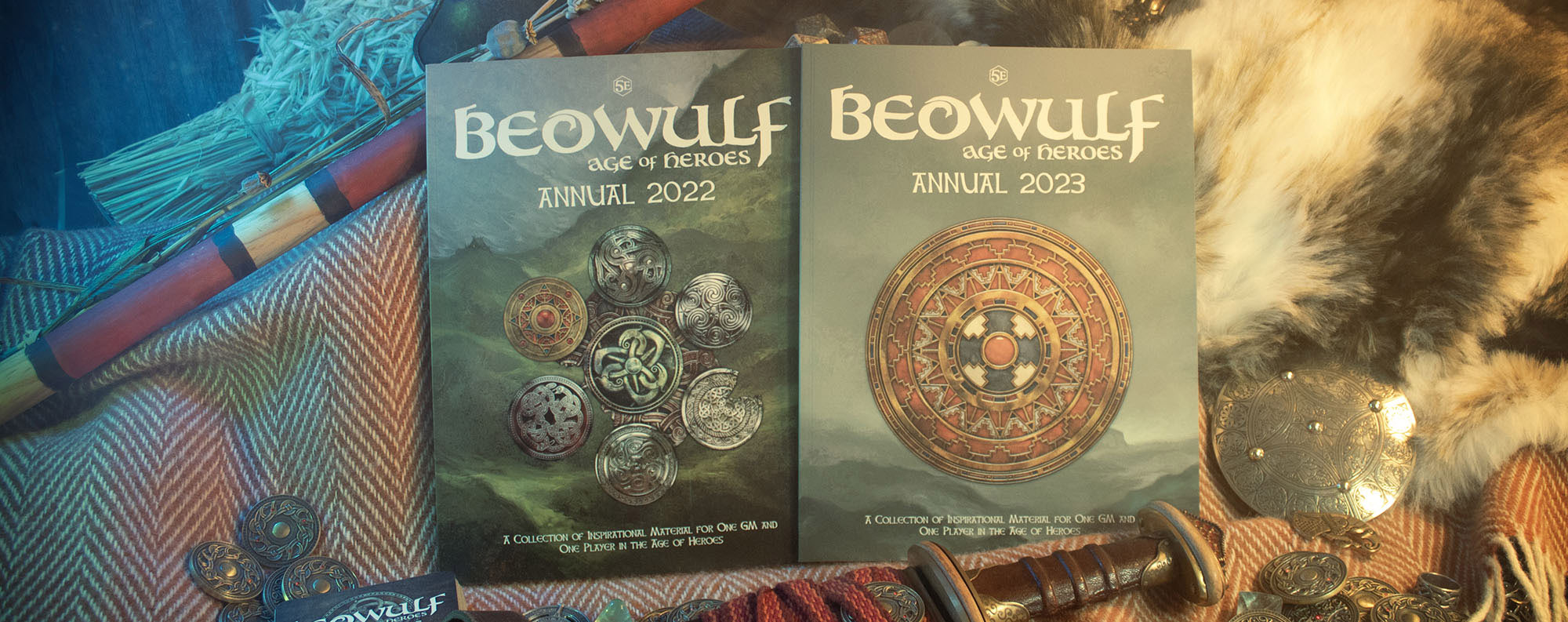Let’s take a look at some tips for how to make good use of the Jon Hodgson Backdrops books.
It’s actually amazingly convenient and easy to take some really good shots of your miniatures with these books. And once you have your set up in place, it’s simplicity itself to grab the book, turn a few pages and select a different backdrop!
So for this walkthrough we’re shooting outside. We’re using a digital SLR, but if you’re using a phone camera nothing changes – the principles remain the same. You might like to find something to lean your camera on to keep it as steady as possible. Here we shot hand-held because there was plenty of sunlight. Remember, the gloomier it is, the longer it will take for your camera to gather the necessary light, so you’re more likely to get shakey shots.
Here’s the equipment we need for maximum convenience. Technical stuff!

So here we have:
• A miniature – we’re using one of our BEOWULF Miniatures, sculpted by Richard Dickens. If you already have your BEOWULF boxed set, and need more miniatures, then you can’t go wrong with the excellent models from Bad Squiddo!
• A scenic base or piece of scatter terrain. This oval piece is really useful, and a great plinth for models. We turn it around to get different layouts of rocks in different shots.
• The backdrops book! We’re using the largely fantasy, or “regular landscapes” book 1. (There’s a sci-fi book too!)
• Three blocks of scrap wood, that can be stacked up in different configurations. You could easily use books for this. Or anything that stacks up to make a solid platform.
Extra credit: clear lots of space around to move things about, and keep your equipment safe. It’s too easy to get engrossed and put a precious miniature in a dangerous spot, or drop your backdrops book in a cluttered space. Or worse, your camera!

We put the book against a wall, stood on a block. Starting here means we can move it up by adding another block, or taking that block away to lower it should we find that we need more or less height later. It’s nice and solidly planted in place and we don’t have to worry about it wobbling or falling over.
In front of that, we add another couple of blocks – again, this gives us a platform which we can modify up or down for maximum flexibility.
You could just put things on the surface you’re using: you don’t need blocks or books. But we find it’s really helpful to be able to move the scenic plinth and the backdrop book independently and easily, with both having a sturdy footing. Planning ahead? Whatever next?

This is what’s next! We place our scenic plinth and miniature. To begin with we put the plinth about an inch or two forward of the backdrop book. We don’t want shadows from the plinth or the miniature hitting that backdrop and spoiling the illusion.

So this is our basic set up. We want to shoot roughly at the eye level of the miniature as a baseline. We might place the camera a bit higher, or a bit lower, depending on what we’re after, but this is our “basic” setting to establish before we try anything clever.
At this point we can check that the miniature is placed with pleasing effect within the backdrop scene. You can easily move the plinth or book up and down to get that just right. Or at least “ok”! We can use the lines of hills and mountains to point to the miniature’s head, or put elements on either side of the model to frame it.
And we’re shooting!

With the miniature this close to the backdrop we can get the backdrop more in focus. We don’t want it sharply focused – that will destroy any sense of depth. We actively want it to be out of focus at least a little bit. And the shot is about the model, not the background! The paintings deliberately lack a focal point to make space for your miniature and its paint job.
We also make sure in these first shots that there’s no shadows from the model hitting the backdrop book, or strong reflections from the page of the book. They have a satin finish to balance colour depth with non-reflectivity. But a strong light right on it can cause a reflection. If you’re really canny you can use that to frame the model to good effect, or simulate the sun within the background. It’s fun to experiment with that.
Now, optionally we can move the set up like this:

We’re bringing the miniature and its plinth much further forward. This will give us a far less in-focus background like this:

This puts more of the backdrop in the frame, but it’ll be more blurry, which can work really well. There’s clearly a scene there, but we don’t know what it is with any certainty. This creates the illusion of a much bigger world for the miniature. We do have to be careful to make sure the edges of the book aren’t in frame – they will quickly destroy any illusion of space.
And that’s it! You can now easily change backdrop, and move your scenic plinth and miniature around to get different shots. You can also introduce further scenic elements between the camera and the miniature to add more depth, or behind the model as a framing device and to make more complex scenes. We heartily recommend the resin scenery from Fenris Games.
-
 Jon Hodgson Backdrops Book One A4£20.00
Jon Hodgson Backdrops Book One A4£20.00 -
Product on sale
 Jon Hodgson Backdrops Book 1 + Sci- Fi BackdropsOriginal price was: £40.00.£38.00Current price is: £38.00.
Jon Hodgson Backdrops Book 1 + Sci- Fi BackdropsOriginal price was: £40.00.£38.00Current price is: £38.00. -
 Jon Hodgson Sci-fi Backdrops Book A4£20.00
Jon Hodgson Sci-fi Backdrops Book A4£20.00

